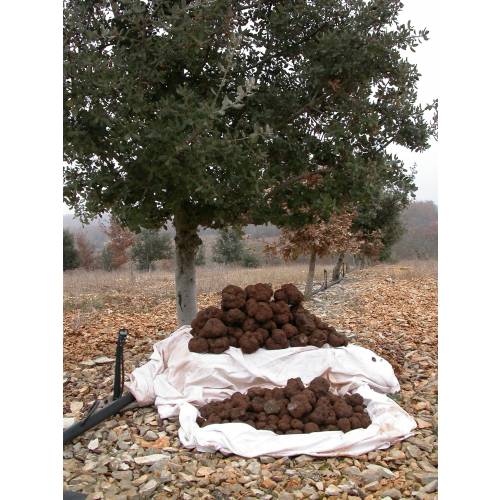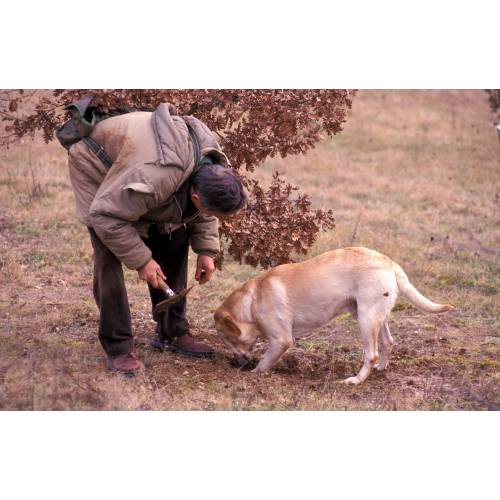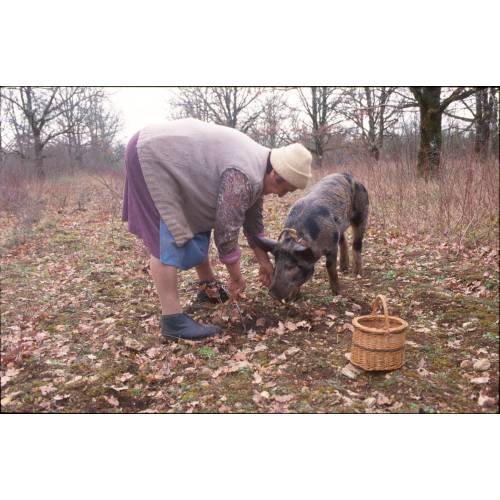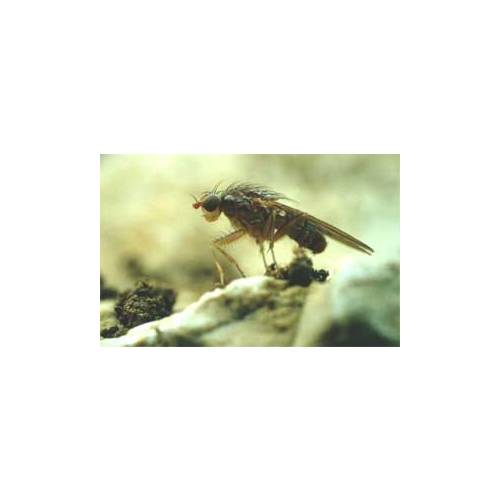
The truffle and it growing
Harvesting the truffle
- Details
-
Périgord truffles must be harvested when they reach maturity between December and the end of February /beginning of March. The Tuber melanosporum will only start giving out its characteristic scent once it has turned black, is perfectly mature and senses the first wintry weather.
The Bourgogne truffle, Tuber uncinatum is gathered from the end of August through to November.
The Summer Truffle closely related to the Bourgogne Truffle is gathered between May and mid August.
Depending on the soil, it is feasible to plant two types of truffle on condition that they are in different plots, thus allowing you to gather truffles for six months of the year!
The odor of a truffle in the ground is not discernible to man unless it is right under his nose! It is for this reason that an animal with a good sense of smell is indispensable. You can use a dog, a pig or even a fly.
The dog
All breeds including mongrels are suitable. However, it is best to avoid hunting dogs that are easily distracted by passing game.
You can find dogs that have been professionally trained or you can train them yourself by using a few of the sometimes jealously guarded secrets... However, if you have a young dog with a sensitive nose and a willing master, then the training is really not that complicated.
As soon as the dog smells the truffle, it will start to scratch at the soil. The collector at this point should take over from the dog and using a small digging tool carefully remove the truffle. Give the dog a little treat such as a biscuit or a small piece of meat, and then get him back to work.
The pig
The pig is no longer really used: more bulky, less mobile and easily tired, it is also more tiring to use than a dog. The pig does not need to be trained but rather muzzled as he looks for truffles to eat.
What is more, he gets very excited as the smell of the truffle reminds him of a sow in heat... although traditional it is hardly worth the effort!
The fly
The type of fly needed for truffle hunting is a species called: Suilla gigantea.
It is a lot more elegant than its cousins with a long light brown body. It has a less energetic flight, is clumsy, heavy and uncertain because it is full of eggs that it wants to lay. It will land just above where the truffle is buried and lay its eggs, attracted by the smell and the fact that its young will have something to feed on when they hatch.
This fly is fussy: it needs mild weather, dry and with plenty of sunshine.
On finding the culprit enjoying the sun, all you have to do is make the fly move away by waving around a stick, then mark the vacated spot and dig to find the truffle.
Afterwards you need to be patient and find some more flies hovering around other truffles It is a feasible method if you do not have a dog. However, you do need good eyesight and some experience.
In spite of everything that has just been said, the main approach to truffle hunting is by using a well-trained dog. - Photos (4)




